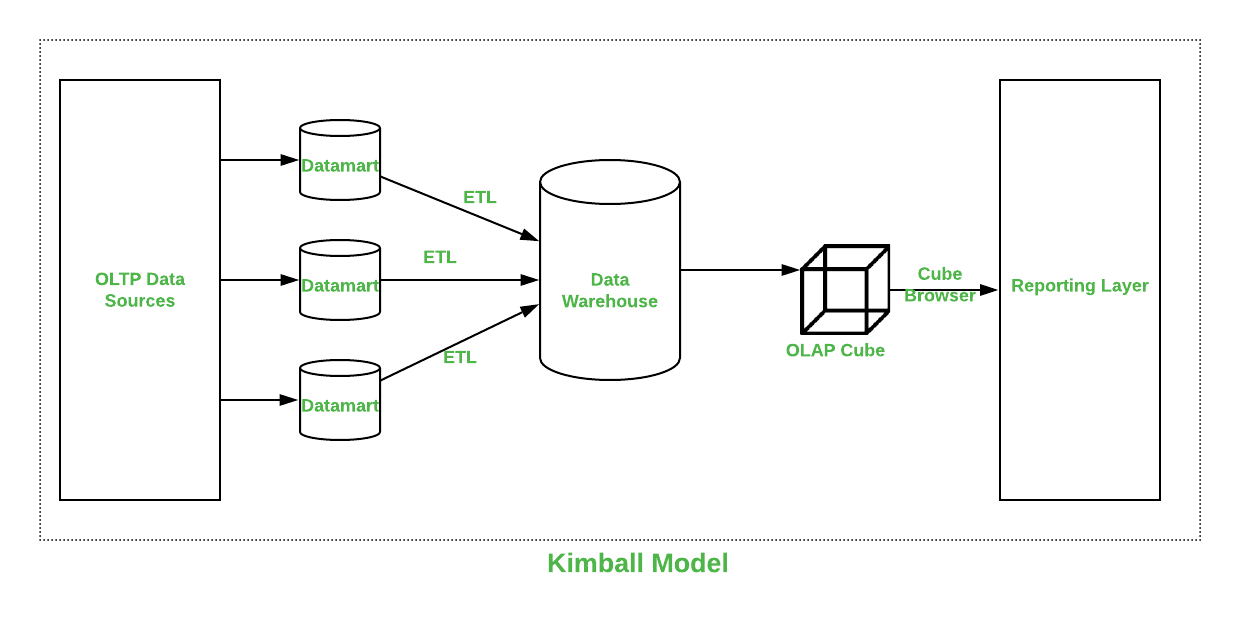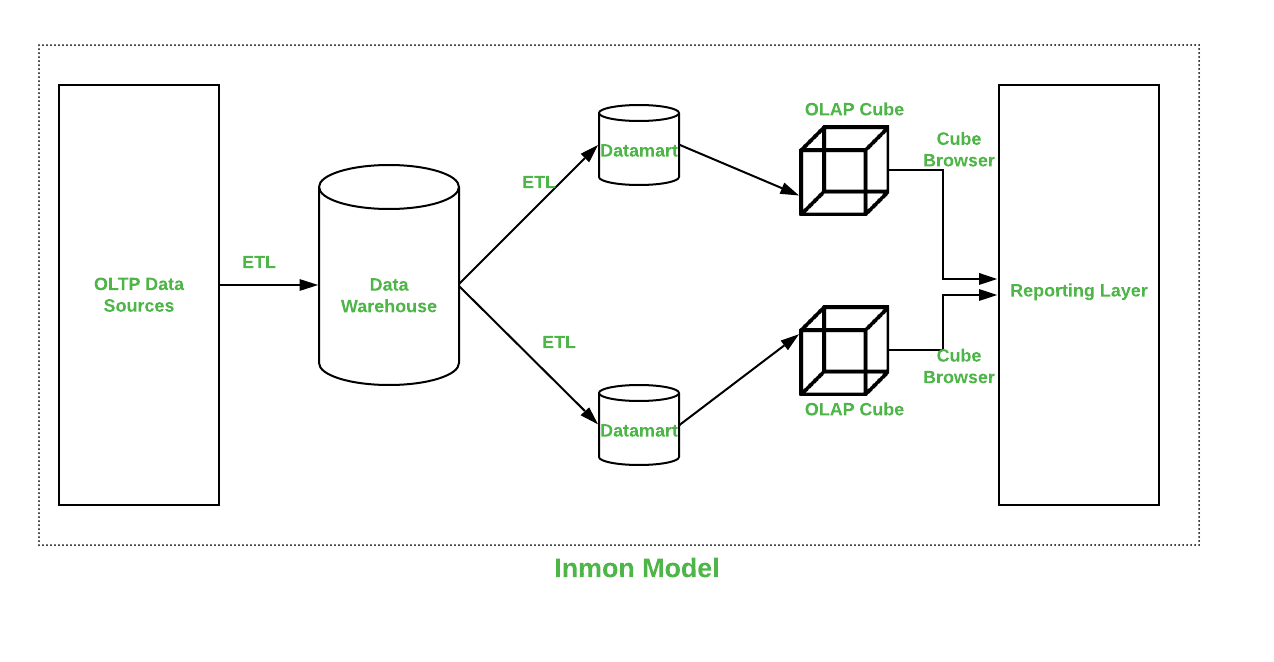Difference between Kimball and Inmon
Last Updated :
02 Aug, 2022
Designing a Data Warehouse is an essential part of business development. For designing, there are two most common architectures named Kimball and Inmon but the question is which one is better, and which one serves users at low redundancy. Let us compare both on some factors.
1. Kimball: Kimball’s approach to designing a Dataware house was introduced by Ralph Kimball. This approach starts with recognizing the business process and questions that Dataware house has to answer. These sets of information are being analyzed and then documented well. The Extract Transform Load (ETL) software brings all data from multiple data sources called data marts and then is loaded into a common area called staging. Then this is transformed into an OLAP cube.
Applications:
- Setup and Built are quick.
- Generating report against multiple star schema is very successful.
- Database operations are very effective.
- Occupies less space in the database and management is easy.
Kimball Dataware house architecture is shown below as follows:
(This should be changed. This is not a Kimball modl. the Kimball model does not have the integration layer. Data moves directly from the source system(s) to the data marts. There is no ODS in Kimball) 2. Inmon: Inmon’s approach to designing a Dataware house was introduced by Bill Inmon. This approach starts with a corporate data model. This model recognizes key areas and also takes care of customers, products, and vendors. This model serves for the creation of a detailed logical model which is used for major operations. Details and models are then used to develop a physical model. This model is normalized and makes data redundancy less. This is a complex model that is difficult to be used for business purposes for which data marts are created and each department is able to use it for their purposes.
2. Inmon: Inmon’s approach to designing a Dataware house was introduced by Bill Inmon. This approach starts with a corporate data model. This model recognizes key areas and also takes care of customers, products, and vendors. This model serves for the creation of a detailed logical model which is used for major operations. Details and models are then used to develop a physical model. This model is normalized and makes data redundancy less. This is a complex model that is difficult to be used for business purposes for which data marts are created and each department is able to use it for their purposes.
Applications:
- The data warehouse is very flexible to changes.
- Business processes can be understood very easily.
- Reports can be handled across enterprises.
- ETL process is very less prone to errors.
Inmon Dataware house architecture is shown below:  The difference Between Kimball and Inmon are as follows:
The difference Between Kimball and Inmon are as follows:
| Parameters |
Kimball |
Inmon |
| Introduced by |
Introduced by Ralph Kimball. |
Introduced by Bill Inmon. |
| Approach |
It has a Bottom-Up Approach for implementation. |
It has Top-Down Approach for implementation. |
| Data Integration |
It focuses on Individual business areas. |
It focuses on Enterprise-wide areas. |
| Building Time |
It is efficient and takes less time. |
It is complex and consumes a lot of time. |
| Cost |
It has iterative steps and is cost-effective. |
Initial cost is huge and the development cost is low. |
| Skills Required |
It does not need such skills but a generic team will do the job. |
It needs specialized skills to make work. |
| Maintenance |
Here maintenance is difficult. |
Here maintenance is easy. |
| Data Model |
It prefers data to be in the De-normalized model. |
It prefers data to be in a normalized model. |
| Data Store Systems |
In this, source systems are highly stable. |
In this, source systems have a high rate of change. |
Like Article
Suggest improvement
Share your thoughts in the comments
Please Login to comment...